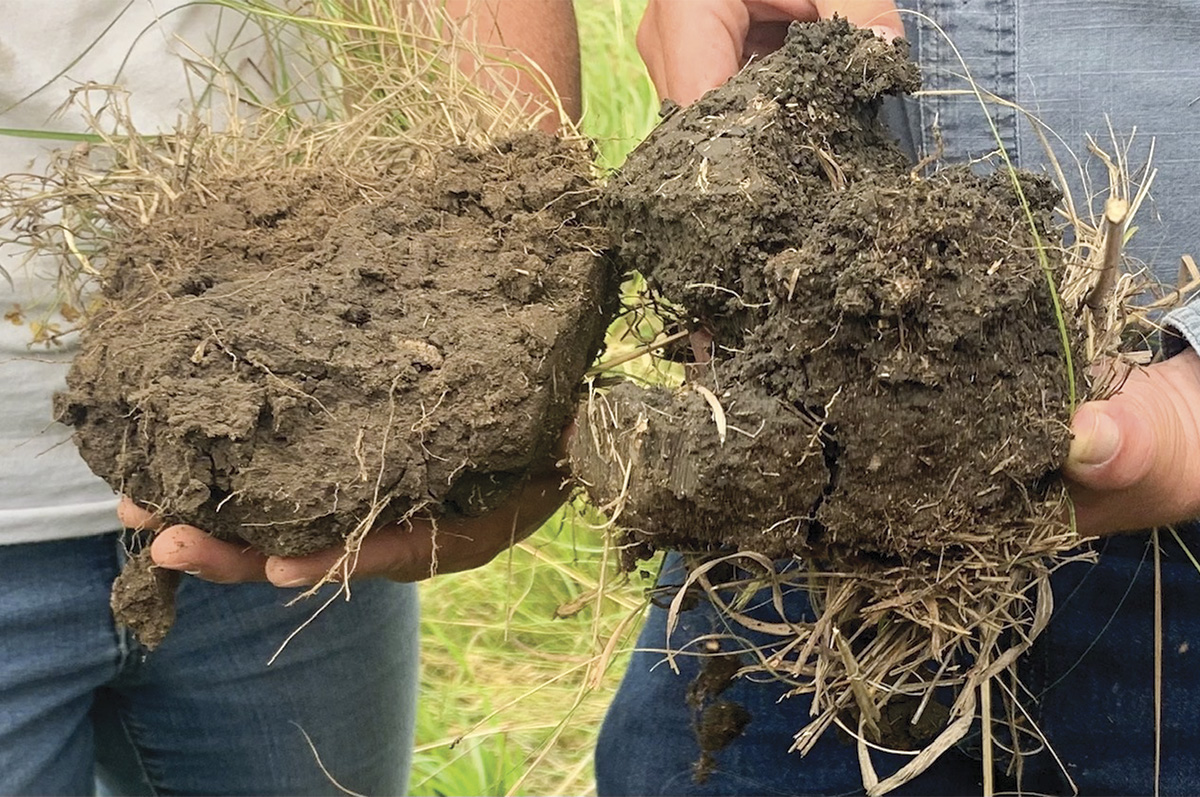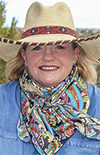Soil aggregate stability – it seemed an abstract thing way back in 1982 and 1983 when I was completing graduate studies on various grazing “systems” (not language I use today, but we are talking 1982 here). Pretty sure many who make their living grazing livestock have little idea what soil aggregate stability is or why it even matters.
I collected soil samples (testing for several things, including organic matter, texture and aggregate stability), clipped and weighed forage by species, and measured water infiltration rate, runoff and sediment production on some 1,500 plots over two years on several different grazing treatments at the Texas Experimental Ranch near Throckmorton, Texas. I wrote my thesis, a few journal articles (read only by other scientists) and promptly put the info on the bookshelf. “Soil health” was not a concept, nor did we make much effort to take that information and make it relevant to livestock producers.
Fast forward 40 years (how can it have been that long ago?) and here we are. The whole world talks about “carbon sequestration,” “ecosystem services” and even “soil health.” We have evolved our thinking to realize that healthy soils and ecosystems are vital to healthy humans, profitable ranches, clean air and water, and more. I think we knew that; we just didn’t talk about it. We certainly did not make it relevant to those of us actually stewarding the land.
Which brings me to the photo of the two clods of soil in a column of water. This picture made the rounds on Facebook and other social media recently. The soil was placed on hardware cloth and gently lowered into the water. The two samples are identical soil series, one from a no-till crop production system and the other from a field conventionally tilled for some 20 years. The clod sitting mostly intact is the no-till clod, while the one that essentially dissolved was from the conventionally tilled field. Hang with me, this is relevant to non-cropped lands as well.
I shared this on the Texas Grazing Land Coalition Facebook page and got lots of comments like “That is an excellent depiction of soil health” and “Great illustration!”
Then something that opened my eyes popped up in the comments. Someone asked, “Why does the no-till clod of soil float? Is that why we have to aerate our hayfields, because the soil does not absorb water?”
It became crystal clear that I had failed to explain the example and make it relevant to someone who perhaps did not get a master’s degree in the hot sun of Throckmorton County by gathering 1,500 little tins of soil on which to perform the “wet sieve” soil aggregate stability test. I assumed they “got it.”
It’s fine and dandy for our agency professionals to tell us we are improving soil health when we enter into Environmental Quality Incentives Program or Conservation Stewardship Program contracts. But if we do not know what that means, how on earth can we improve it?
Soil aggregate stability is critical to the soil’s ability to infiltrate and hold water. That no-till soil in the water is saturated – just how we want our rangeland and pasture soils to be following a rainfall event. The conventionally tilled soil had no aggregate stability, thus it dissolved in the water.
It is common in a soil lacking aggregate stability to dig down after a rainfall event and find dry soil. The infiltration was impeded, leading to runoff. Runoff that carried with it that dissolving soil … topsoil and water leaving the property and heading downstream.
Can we impact soil aggregate stability? You bet! The basic principles of soil health all support aggregate stability:
- Context: Some soils have more aggregate stability than others (e.g., clay loam versus sandy soil).
- Cover the soil: Protect the soil surface. Wind erosion, heat, etc. all wreak havoc on soil microbiology and diminish soil organic matter, both of which are key to healthy soils. Soils with more organic matter have more aggregate stability.
- Minimize disturbance: Tillage = disturbance. Big time disturbance. It breaks down aggregate stability.
- Increase diversity: The more diversity of plant life you have, again, the healthier the soil microbiology. Healthy soil microbe populations mean more organic matter, which leads to greater aggregate stability.
- Keep living roots in the soil year-round: Yep, perennial plant roots are better for the soil and keep the soil microbiology happy all winter long.
- Integrate livestock into the system: Grazing encourages diversity, root growth, etc., which increases aggregate stability.
See a pattern here? It all works together, and livestock has a key role as well.
I am fairly sure you do not want to send off a sample of your soil to analyze the soil aggregate stability, but I bet you can get an idea at home. From a spade full of soil, tease out a naturally formed clod. Ease it into some water with a piece of screen or hardware cloth to suspend it. Hopefully, your soil does not dissolve.
That hayfield that “needed” aeration was most likely a bermudagrass field – a monoculture with relatively shallow roots and possibly no livestock in the system, just a swather and baler. It was also likely fertilized, which does not support aggregate stability like encouraging natural fertility does.

These are two samples from neighboring pastures. One (right) has been in tall grass prairie, never tilled and in a rotational grazing system. The other (left) was continuously grazed very short for many years. Photo provided by Jenny Pluhar.
Can we change these things on pastures or rangelands? Yes, we can! The photo of the two clods of soil is a perfect example. These came from the G-C Ranch, north of the Dallas-Fort Worth metroplex. It is Hensley loam. The darker sample has been in tall grass prairie, never tilled and in a rotational grazing system for many years now. The lighter sample was from a neighboring pasture, continuously grazed very short for many years. G-C acquired this tract four years ago and immediately changed its management. The vegetation looks much better, and the soils are improving.
It may have taken me 40 years to explain the relevance of my graduate research to the audience that really matters: ranchers. Now I think I need a T-shirt that says, “Aggregate Stability Matters.” If grazing management was easy, they’d call it rocket science.
.jpg?t=1710526654&width=1080)








